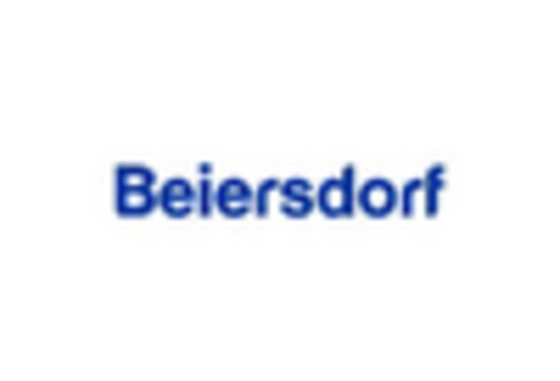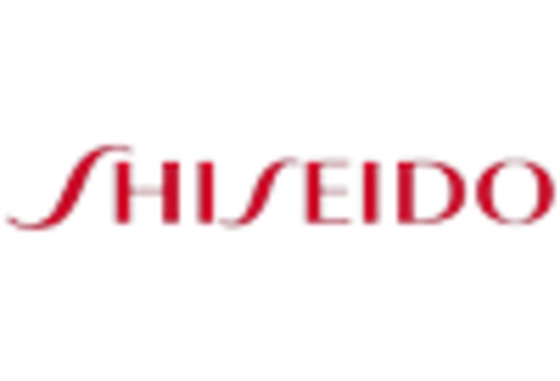The Sun Care Cosmetics Market is currently characterized by a dynamic competitive landscape, driven by increasing consumer awareness regarding skin health and the rising incidence of skin-related ailments. Major players such as L'Oreal (FR), Procter & Gamble (US), and Estée Lauder (US) are strategically positioned to leverage innovation and sustainability as key differentiators. L'Oreal (FR) has focused on enhancing its product portfolio with eco-friendly formulations, while Procter & Gamble (US) emphasizes digital transformation to engage consumers more effectively. Estée Lauder (US) has adopted a strategy of regional expansion, particularly in emerging markets, to capture a broader consumer base. Collectively, these strategies not only enhance their market presence but also intensify competition, as companies vie for consumer loyalty in an increasingly crowded marketplace.
In terms of business tactics, companies are increasingly localizing manufacturing to reduce costs and improve supply chain efficiency. The Sun Care Cosmetics Market appears moderately fragmented, with a mix of established brands and emerging players. The collective influence of key players shapes market dynamics, as they engage in strategic partnerships and collaborations to enhance their product offerings and market reach.
In August 2025, L'Oreal (FR) announced the launch of a new line of biodegradable sunscreen products, which aligns with the growing consumer demand for sustainable beauty solutions. This strategic move not only positions L'Oreal as a leader in eco-conscious cosmetics but also reflects a broader industry trend towards sustainability. By investing in environmentally friendly products, L'Oreal aims to attract a demographic increasingly concerned with the ecological impact of their purchases.
In September 2025, Procter & Gamble (US) unveiled a digital platform that utilizes AI to personalize sun care recommendations for consumers. This initiative is significant as it enhances customer engagement and fosters brand loyalty through tailored experiences. By integrating technology into their marketing strategy, Procter & Gamble is likely to set a new standard for consumer interaction in the beauty sector, potentially reshaping how brands connect with their audiences.
In July 2025, Estée Lauder (US) expanded its distribution network in Asia, particularly in China, by partnering with local e-commerce platforms. This strategic action is crucial as it allows Estée Lauder to tap into the rapidly growing online beauty market in Asia, which is expected to continue its upward trajectory. By aligning with local platforms, the company not only increases its market penetration but also enhances its brand visibility among a tech-savvy consumer base.
As of October 2025, the competitive trends in the Sun Care Cosmetics Market are increasingly defined by digitalization, sustainability, and the integration of AI technologies. Strategic alliances are becoming more prevalent, as companies seek to enhance their capabilities and market reach. Looking ahead, competitive differentiation is likely to evolve from traditional price-based competition to a focus on innovation, technological advancements, and supply chain reliability. This shift underscores the importance of adapting to consumer preferences and market demands in a rapidly changing landscape.


















Leave a Comment